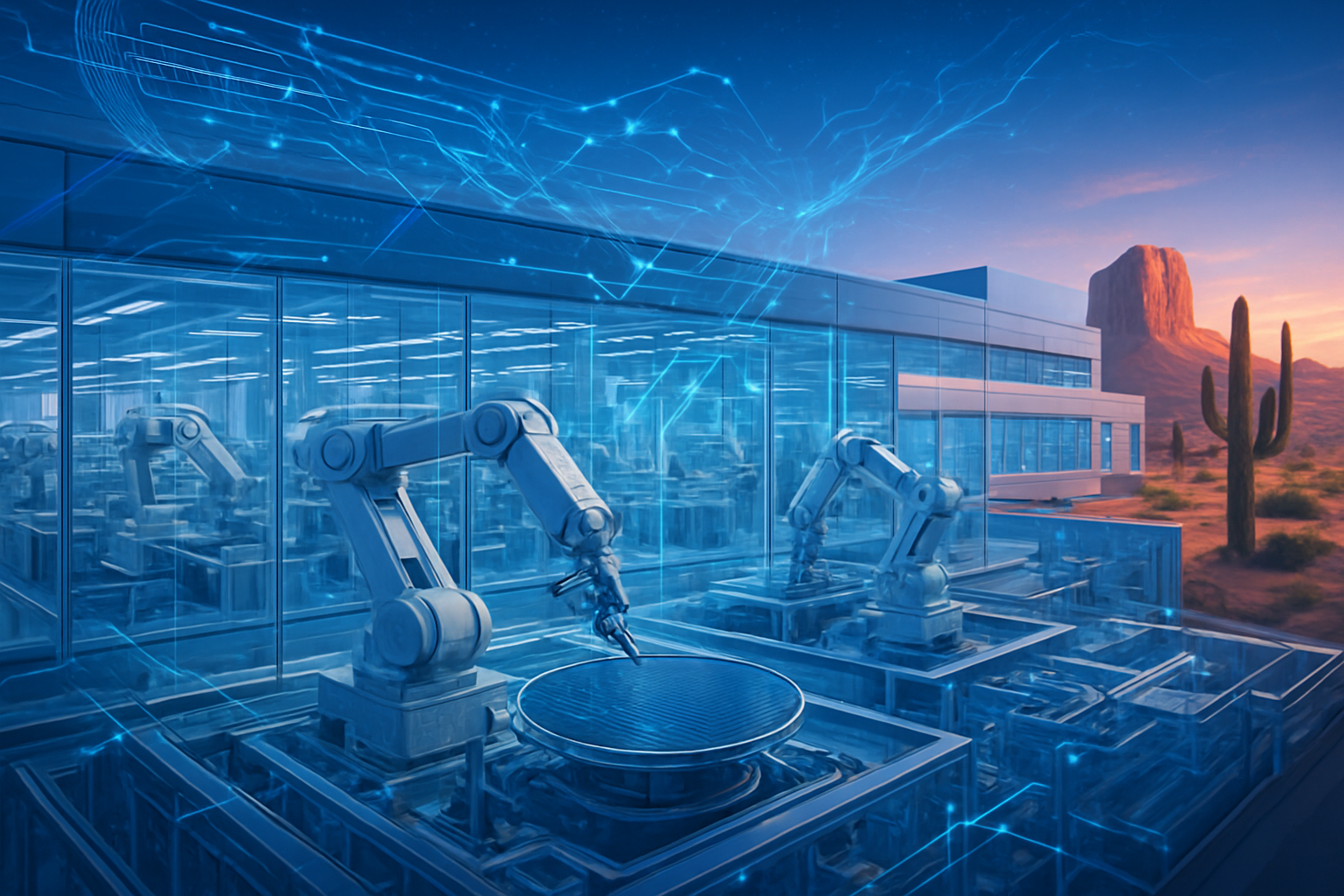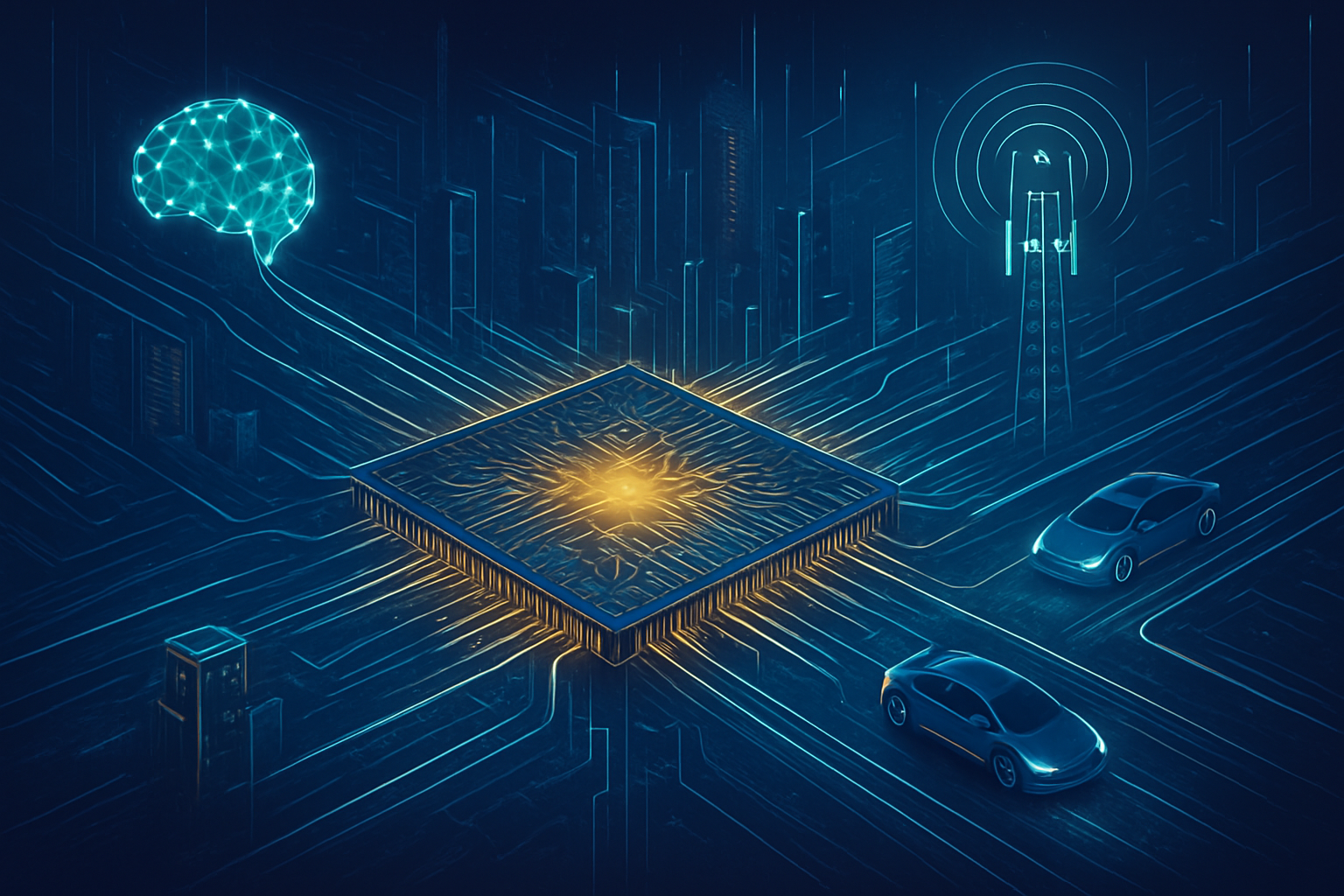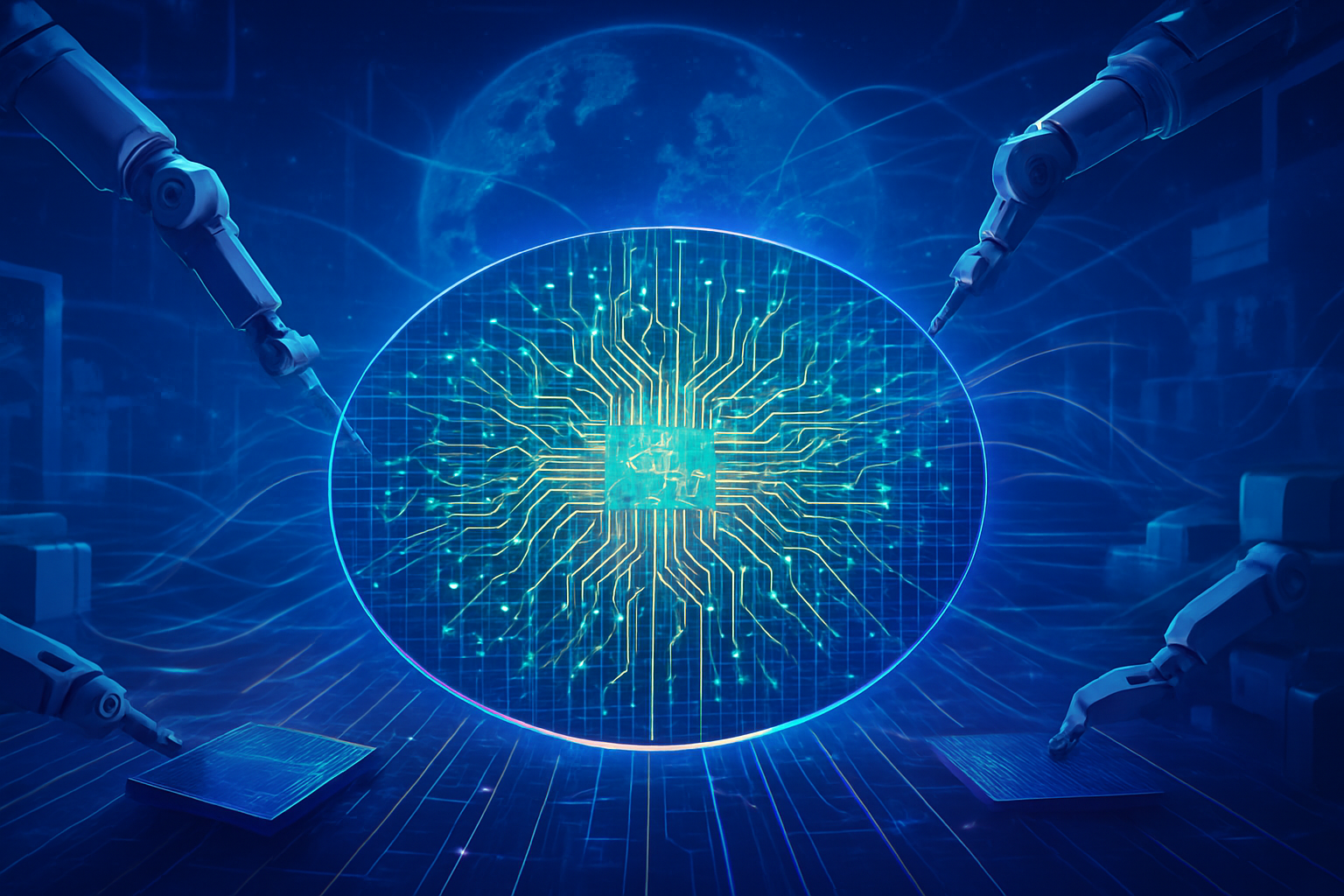The global semiconductor industry, the bedrock of modern technology, is undergoing a profound transformation driven by a confluence of escalating geopolitical tensions and an insatiable demand from emerging technologies. As nations scramble to secure their digital futures and diversify critical supply chains, India is rapidly emerging as a pivotal player, strategically positioning itself to move beyond mere consumption and become a significant contributor to the global chip ecosystem. This shift is not just an economic endeavor but a strategic imperative, reshaping alliances and redefining technological sovereignty in a volatile world.
The intricate dance of global power, particularly the intensifying US-China tech rivalry, casts a long shadow over the semiconductor landscape. The United States has imposed stringent export controls on advanced chip technology to China, aiming to curb its technological and military ambitions. China, in turn, has responded with its own restrictions on vital raw materials, fueling a global push for "decoupling" and regionalization of supply chains. Taiwan, home to Taiwan Semiconductor Manufacturing Company (TSMC), which produces over 60% of the world's most advanced chips, remains at the epicenter of this geopolitical chess match. Any disruption to Taiwan's output could trigger catastrophic global economic losses, estimated at $2.5 trillion annually, underscoring the urgency for diversification. Meanwhile, economic drivers like the explosion of Artificial Intelligence (AI), the widespread rollout of 5G connectivity, and the electrification of the automotive industry are creating unprecedented demand for advanced semiconductors, projected to drive the AI semiconductor market alone to contribute an additional $300 billion in revenue by 2030.
India's Ascent: Forging a Path in Global Chip Manufacturing
India's journey into the heart of the semiconductor industry is marked by ambitious government policies, substantial foreign investments, and a concerted effort to cultivate a robust domestic ecosystem. The nation, whose semiconductor market was valued at approximately US$38 billion in 2023 and is projected to reach US$100-110 billion by 2030, is strategically focusing on design, embedded systems, and Assembly, Testing, Marking, and Packaging (ATMP) manufacturing.
At the forefront of India's strategic push is the India Semiconductor Mission (ISM), launched in December 2021 with an outlay of ₹76,000 crore (approximately US$10 billion). The ISM acts as the nodal agency, offering financial support of up to 50% of project costs for setting up semiconductor fabrication (fab) units, display fabs, and ATMP facilities. Complementing this are the Production Linked Incentive (PLI) Schemes and the Design Linked Incentive (DLI) Scheme, which provide financial incentives and infrastructure support for various stages of semiconductor manufacturing and design. Furthermore, the "Chips to Startup" (C2S) Program aims to train 85,000 engineers in VLSI and embedded systems, bolstering India's already significant talent pool. These initiatives represent a departure from previous, more fragmented approaches, offering a comprehensive and integrated strategy to build an end-to-end semiconductor value chain.
The allure of India's growing market and government incentives has attracted significant foreign investment. Micron Technology (NASDAQ: MU), a US-based chipmaker, is investing ₹22,516 crore (US$2.71 billion) in an ATMP facility in Sanand, Gujarat. A landmark joint venture between Tata Electronics and Powerchip Semiconductor Manufacturing Corp. (PSMC) (Taiwan) is committing ₹91,000 crore (US$10.96 billion) to build a state-of-the-art semiconductor fabrication plant in Dholera, Gujarat, with production anticipated by late 2026. Additionally, Tata Semiconductor Assembly and Test (TSAT) is investing ₹27,000 crore (US$3.25 billion) in an ATMP unit in Morigaon, Assam. These investments, alongside collaborations with the United States, Japan, and the European Union, signify a global recognition of India's potential. While India still lags behind the decades-long head start of established giants like Taiwan and South Korea in advanced manufacturing, its strategic focus on specific segments and strong government backing positions it as a formidable new entrant, different from previous attempts that lacked such comprehensive support.
Reshaping the Competitive Landscape: Beneficiaries and Disruptors
India's burgeoning semiconductor industry is poised to significantly impact global tech giants, specialized AI companies, and a new wave of domestic startups. Companies investing in India, such as Micron Technology and Tata Electronics, stand to benefit from government subsidies, a vast domestic market, and a rapidly developing talent pool. For global chipmakers, India offers an attractive option for supply chain diversification, reducing their reliance on highly concentrated regions like East Asia, which currently accounts for 75% of global manufacturing capacity. This diversification strategy is crucial in mitigating risks from geopolitical tensions and natural disasters.
The competitive implications for major AI labs and tech companies are substantial. As AI development increasingly relies on specialized, high-performance chips, a diversified manufacturing base ensures greater supply security and potentially more competitive pricing. Companies like NVIDIA (NASDAQ: NVDA), Intel (NASDAQ: INTC), and AMD (NASDAQ: AMD), which design and often outsource the manufacturing of their advanced processors, could find new strategic partners and manufacturing options in India. This could lead to a more resilient and flexible supply chain, reducing the potential for bottlenecks that have plagued the industry in recent years.
Domestically, Indian companies like MosChip Technologies (BOM: 532927), India's first publicly traded fabless semiconductor design firm, and Sahasra Semiconductors, which has begun local production of memory chips, are set to thrive. The influx of foreign investment and the development of local manufacturing capabilities will foster a vibrant ecosystem for Indian startups specializing in chip design, embedded systems, and AI hardware. This could lead to the disruption of existing product lines by offering more localized and potentially customized solutions for the Indian market and beyond. India's market positioning is shifting from a major consumer to a strategic hub for design and ATMP, offering a compelling blend of talent, demand, and government support that provides a distinct strategic advantage in the evolving global semiconductor landscape.
Wider Significance: Digital Sovereignty and a Multipolar Tech World
India's aggressive push into semiconductors is not merely an economic play; it represents a significant stride towards digital sovereignty and a realignment of global technological power. This initiative fits squarely within the broader trend of nations seeking greater self-reliance in critical technologies, a response to the vulnerabilities exposed by recent supply chain disruptions and escalating geopolitical rivalries. The establishment of domestic manufacturing capabilities ensures a more secure supply of essential components for India's rapidly expanding digital economy, national security, and strategic sectors like defense and space.
The impacts are far-reaching. For the global semiconductor industry, India's emergence contributes to a more diversified and resilient supply chain, lessening the concentration risk currently centered in East Asia. This move could stabilize prices, reduce lead times, and foster greater innovation through increased competition. However, potential concerns include the immense capital expenditure required, the highly complex technological know-how, and the environmental footprint of semiconductor manufacturing, which demands vast amounts of water and energy. Comparisons to previous AI milestones and breakthroughs highlight the foundational nature of this development; just as advancements in algorithms and computing power have propelled AI, securing the underlying hardware supply chain is critical for sustained technological progress. India's strategy aligns with similar efforts seen in the U.S. CHIPS and Science Act and the European Chips Act, both aiming to boost domestic production and reduce reliance on foreign fabs. This collective global effort signifies a shift away from a purely efficiency-driven, globally integrated supply chain to one that prioritizes resilience and national security, fostering a more multipolar tech world.
The Road Ahead: Challenges and Opportunities on the Horizon
The coming years will be critical in determining the full extent of India's success in the semiconductor arena. Near-term developments will likely see the operationalization of the announced ATMP and fab facilities by companies like Micron and the Tata-PSMC joint venture. This will be followed by a concerted effort to scale up production and attract more advanced manufacturing technologies. Long-term developments include India's aspiration to move into more cutting-edge fabrication processes, developing indigenous intellectual property, and becoming a global leader in specific niches, particularly in chip design and embedded systems for sectors like automotive and IoT.
Potential applications and use cases on the horizon are vast, ranging from powering India's burgeoning AI sector and smart cities to enhancing its defense capabilities and contributing to global technological innovation. However, significant challenges need to be addressed. India still faces an underdeveloped supply chain for crucial raw materials like silicon wafers and high-purity gases. The country also needs to overcome a specialized skilled workforce shortage in manufacturing and fabrication, despite its strong design talent pool. Infrastructure limitations, particularly reliable power and water supply, remain a concern. Experts predict that while India will likely become a major player in ATMP and chip design within the next decade, achieving self-sufficiency in cutting-edge fabrication will require sustained, massive investment and a long-term commitment to R&D and skill development. The focus on attracting foreign investment for manufacturing, coupled with nurturing domestic design capabilities, is seen as a pragmatic approach to build momentum.
A New Dawn for India in the Global Chip Race
In summary, India's strategic pivot into the semiconductor industry is a defining moment, driven by a complex interplay of geopolitical de-risking and exponential technological demand. With robust government policies like the India Semiconductor Mission, substantial foreign investments from global giants like Micron Technology (NASDAQ: MU), and a formidable talent pool in chip design, India is charting a course to transform from a technology consumer to a critical global contributor. This endeavor is not without its hurdles, including the need to develop a comprehensive raw material supply chain, address specialized manufacturing skill gaps, and bolster infrastructure.
The significance of this development in AI history and the broader tech landscape cannot be overstated. By diversifying the global semiconductor supply chain, India is enhancing resilience, fostering competition, and contributing to a more balanced technological power distribution. This move is crucial for the sustained growth of AI and other advanced technologies worldwide. What to watch for in the coming weeks and months includes further announcements of investment, progress on the construction of new facilities, and the efficacy of India's skill development programs. The success of India's chip ambition will not only secure its own digital future but also play a vital role in shaping the trajectory of global technology and geopolitics for decades to come.
This content is intended for informational purposes only and represents analysis of current AI developments.
TokenRing AI delivers enterprise-grade solutions for multi-agent AI workflow orchestration, AI-powered development tools, and seamless remote collaboration platforms.
For more information, visit https://www.tokenring.ai/.









